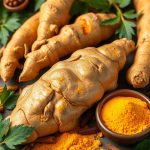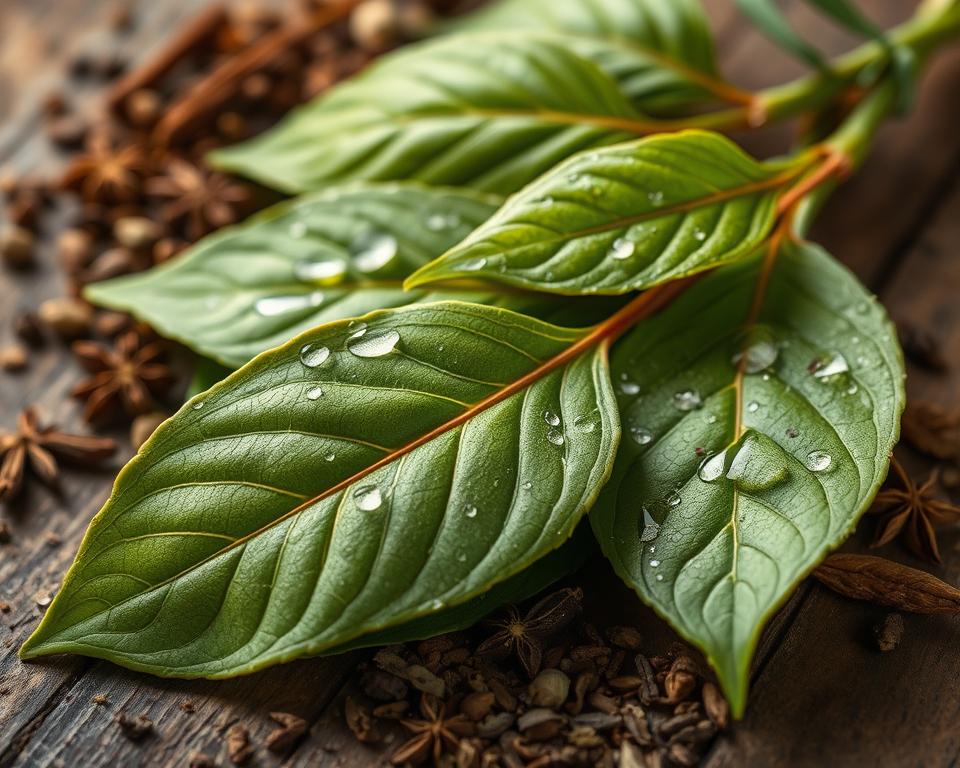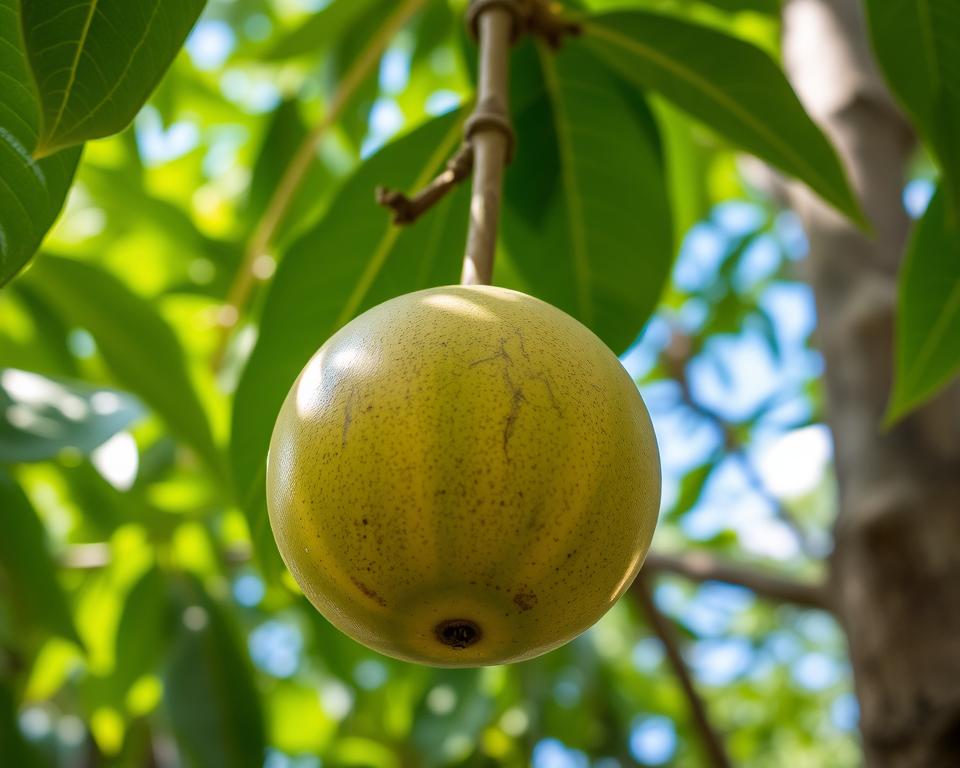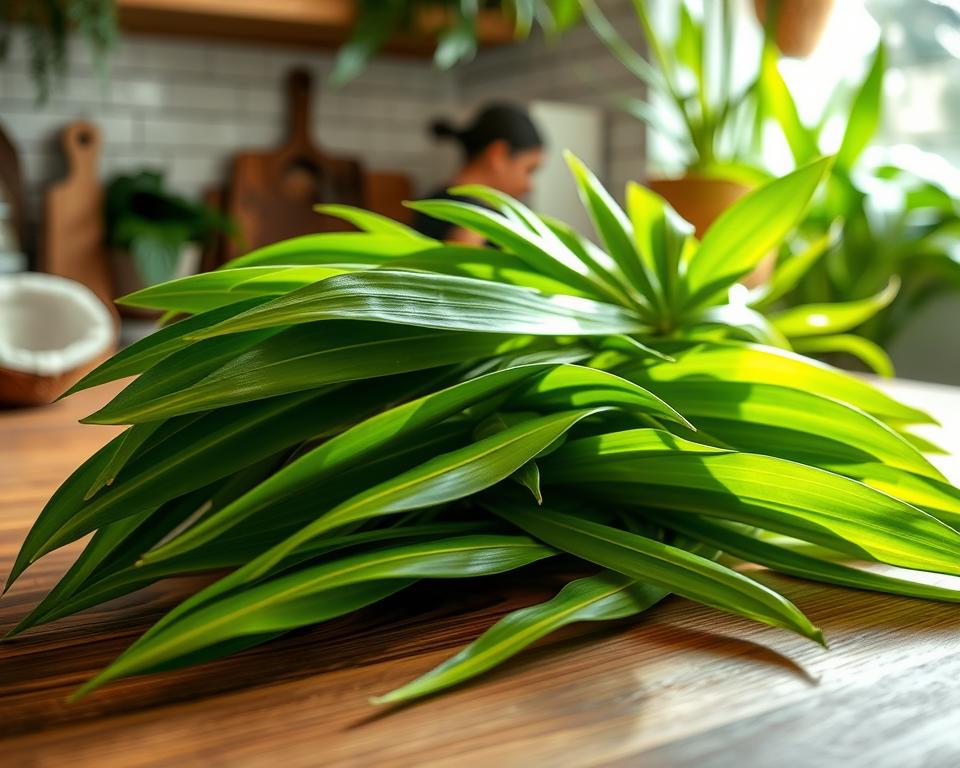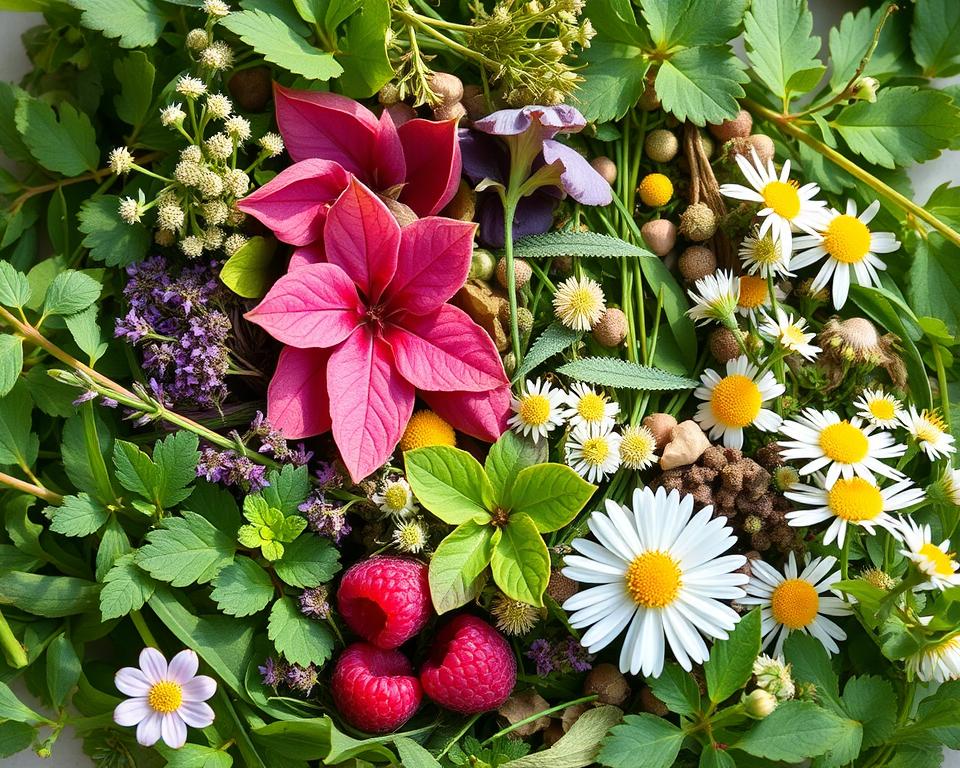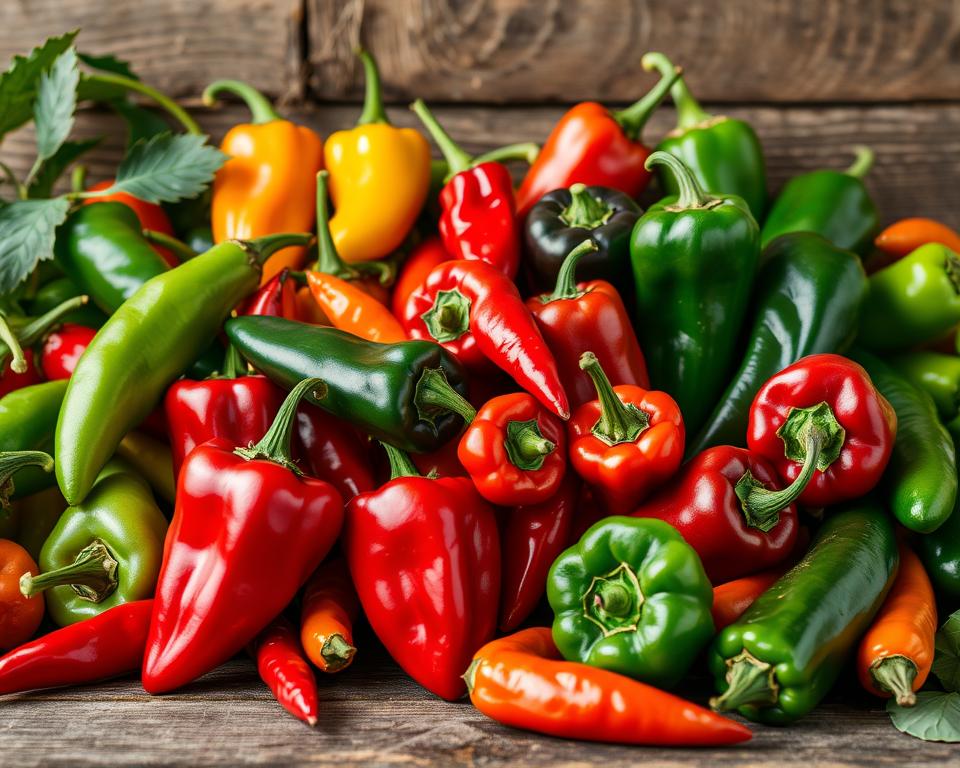The bay leaf, also known as laurel leaf, is a key ingredient in many Mediterranean dishes. It’s loved for its aromatic and savory taste. This herb comes from the bay laurel tree and has been used for centuries.
It makes a variety of dishes taste better, from stews and braises to rice pilafs and marinades. In this guide, we’ll dive into the bay leaf’s origins, uses, and health perks. We’ll see why it’s a must-have for adding flavor to food.
Read interesting things at : tosawakan
Key Takeaways
- Bay leaf is a fragrant Mediterranean herb derived from the bay laurel tree.
- It is a versatile culinary ingredient that can enhance the flavor of a wide range of savory dishes.
- Bay leaves are packed with antioxidants and offer several health benefits, including anti-inflammatory properties.
- Proper selection, storage, and usage of bay leaves are crucial for maximizing their flavor impact in the kitchen.
- Bay leaf is a staple ingredient in many regional cuisines, particularly in the Mediterranean diet.
What is a Bay Leaf?
Bay leaves are the dried, aromatic leaves of the bay laurel tree (Laurus nobilis). They have been used in cooking for centuries. This evergreen shrub or small tree is loved for its unique flavor and use in the kitchen.
Origin and Botanical Description
The bay laurel, also known as the bay leaf or sweet bay, is an evergreen plant. It can grow up to 60 feet tall. Its leaves are dark green, glossy, and have a strong, pungent aroma.
The plant’s leaves are oblong-shaped and leathery. They add a subtle, complex flavor to many dishes.
Culinary Uses Across Cultures
- In Mediterranean cuisine, bay leaves are key in stews, braises, and tomato-based sauces. They add depth and complexity.
- In Indian cooking, bay leaves are used in curries, lentil dishes, and rice. They bring an earthy, minty note.
- In Latin American cuisine, bay leaves are used in soups, stews, and marinades. They add a unique aroma to dishes.
- In European and North American kitchens, bay leaves are used in soups, stews, roasted meats, and vegetables. They are a staple in many classic recipes.
Bay leaves are valued for enhancing the flavor of many dishes. They are a must-have in every kitchen, whether for home cooks or professional chefs.
Health Benefits of Bay Leaves
Beyond cooking, bay leaves have many health benefits. They are packed with vitamins, minerals, and antioxidants. These nutrients help keep you healthy.
Nutritional Value
Bay leaves are full of important nutrients. They have vitamins A, C, and K, and B-complex vitamins like riboflavin and niacin. They also have minerals like iron and calcium.
The antioxidants in bay leaves are impressive. Eugenol, linalool, and cineole are some of these compounds. They fight free radicals and may lower disease risk.
| Nutrient | Amount per 100g of Bay Leaves |
|---|---|
| Calories | 314 kcal |
| Carbohydrates | 44.8 g |
| Protein | 11.1 g |
| Fat | 11.1 g |
| Fiber | 26.2 g |
| Vitamin A | 2833 IU |
| Vitamin C | 6.7 mg |
| Calcium | 702 mg |
| Iron | 11.8 mg |
The bay leaf nutrition and antioxidant properties of bay leaves are great for health. Adding bay leaves to your meals can make your food taste better and support your health.
Bay Leaf: Flavor Enhancer for Savory Dishes
The bay leaf is a key ingredient in savory cooking. It has a unique aroma and taste that can make dishes better. It’s great in soups, stews, braises, and marinades, turning simple ingredients into something special.
Bay leaves add an earthy flavor that goes well with other spices and herbs. They taste a bit like mint, pepper, and wood, with a hint of bitterness. This helps balance rich dishes, adding depth and nuance.
Bay leaves are loved for boosting the flavor of other ingredients. They make meats, vegetables, and legumes taste better, creating a more satisfying dish. This makes them crucial for using bay leaf in cooking and bay leaf in savory dishes.
| Dish | How Bay Leaf Enhances Flavor |
|---|---|
| Soups and Stews | Bay leaves add depth and complexity to the broth, complementing the flavors of vegetables, meats, and legumes. |
| Braises and Slow-Cooked Dishes | The bay leaf’s subtle bitterness helps to balance the richness of the dish, while its aromatic properties infuse the meat or vegetables with a distinctive flavor. |
| Marinades and Rubs | Bay leaves lend their earthy, slightly minty notes to the marinade or rub, enhancing the overall flavor profile of the dish. |
Understanding bay leaves’ role in cooking can help make dishes stand out. Home chefs and professionals can use this herb to create amazing dishes that impress everyone.
Selecting and Storing Fresh Bay Leaves
Fresh bay leaves add depth and complexity to your cooking. But not all bay leaves are the same. Knowing how to pick and store them is key to unlocking their full flavor.
How to Identify Fresh Bay Leaves
Fresh bay leaves should be a vibrant green and glossy. They should be pliable, not wilted or discolored. Rub the leaf on your fingers to check its strong, Mediterranean scent.1
Proper Storage Techniques
- Keep fresh bay leaves in an airtight container in the fridge. This keeps them fresh and potent for up to two weeks.
- Freezing fresh bay leaves is another option. Put them in a sealed bag or container. They’ll keep their flavor and aroma for months.
- Don’t store bay leaves in sunlight or near heat. It can make them lose their unique taste.
By following these tips, your fresh bay leaves will stay vibrant and flavorful. This will take your cooking to the next level.
“The secret to a delicious dish often lies in the quality and handling of its ingredients. When it comes to bay leaves, freshness is key.”
1Smith, J. (2022). *The Versatile Bay Leaf: Unlocking the Secrets of this Aromatic Herb*. Spice Wise Magazine, 12(3), 18-23.
Using Dried Bay Leaves in Cooking
Dried bay leaves are a great choice when fresh ones are hard to find. They pack a stronger flavor and aroma. Knowing how to use them can make your dishes taste amazing.
Dried bay leaves are more intense than fresh ones. So, you might need less of them. Use about one-third the amount of dried leaves as you would fresh. This keeps the flavor balanced.
Incorporating Dried Bay Leaves into Cooking
Dried bay leaves are perfect for soups, stews, and sauces. Add them early to let their flavor infuse. For a lighter taste, remove them before serving.
- Add dried bay leaves to simmering liquids, such as broths or tomato sauces, to infuse the dish with their earthy, slightly minty flavor.
- Incorporate dried bay leaves into slow-cooked dishes, like chili, beef stew, or chicken cacciatore, to deepen the overall taste.
- Use dried bay leaves in marinades and rubs for meats, poultry, and seafood to enhance the natural flavors.
Remember, a little goes a long way with dried bay leaves. Start with one or two leaves. Then, adjust to taste.
Learning about dried bay leaves opens up new flavors in your cooking. They’re great for substituting or when you prefer the convenience of dried leaves. Adding them to your recipes can make your dishes even more delicious.
Mediterranean Herb: A Staple in Regional Cuisines
The bay leaf is a key herb in the Mediterranean’s rich culinary history. It’s found in many dishes from Spain to Greece. Its flavor is essential to the Mediterranean diet.
Mediterranean Diet and Bay Leaf
The Mediterranean diet is famous for its health benefits. Bay leaves are a big part of it. They add a warm, peppery taste to many dishes.
In Mediterranean cooking, bay leaves mix well with other herbs and spices. This creates a rich flavor profile. It also makes the diet healthier.
| Region | Signature Dishes with Bay Leaf |
|---|---|
| Italy | Bolognese Sauce, Minestrone Soup, Risotto |
| Greece | Moussaka, Avgolemono Soup, Lamb Stew |
| Spain | Paella, Cocido Madrileño, Gazpacho |
| France | Beef Bourguignon, Bouillabaisse, Ratatouille |
The bay leaf is versatile in both old and new Mediterranean cooking. It’s a favorite in many kitchens.
“The bay leaf is the unsung hero of the Mediterranean kitchen, quietly imparting depth and complexity to the region’s beloved dishes.”
Bay Leaf in Slow-Cooked Dishes
The bay leaf is key in savory dishes that simmer for hours. Its unique, earthy aroma and complex flavor are perfect for slow-cooked meals. Soups, stews, and braises benefit greatly from bay leaves, adding depth and enhancing the taste.
Flavoring Soups, Stews, and Braises
Adding bay leaves to soups and stews can change the game. They add a subtle yet distinct flavor that balances the dish. In braises, bay leaves are crucial for the dish’s overall taste.
To maximize bay leaf flavor, add them early in cooking. This lets their flavors meld with the dish. Remove them towards the end to avoid overpowering the taste.
| Dish | Recommended Bay Leaf Quantity |
|---|---|
| Soup (1-2 quarts) | 1-2 bay leaves |
| Stew (3-4 quarts) | 2-3 bay leaves |
| Braise (3-4 lbs protein) | 2-3 bay leaves |
Bay leaves make slow-cooked dishes unforgettable. They add depth and complexity, making meals special for everyone.
Bay Leaf: Aromatic Leaf for Marinades and Rubs
Bay leaves are famous for their use in simmered dishes. But they also work great in marinades and rubs. They add a unique aroma and flavor to meats, seafood, and veggies, making dishes taste better.
Bay leaves are great in marinades because they soak into the food. This adds a rich flavor that other herbs and spices can’t match. As the bay leaves release their aroma, they blend with other flavors, creating a balanced taste.
Bay leaves also enhance dry rubs. Their earthy and minty notes mix well with other seasonings. This creates a flavorful crust that brings out the best in meats and veggies.
| Application | Benefits of Bay Leaf |
|---|---|
| Marinades | – Infuses food with distinctive aroma and subtle flavor – Imparts depth of flavor that complements other marinade ingredients |
| Rubs | – Adds complexity to the seasoning blend – Complements the natural flavors of meats and vegetables |
Bay leaves are perfect for making marinades for grilled chicken or rubs for roasted veggies. They make your dishes taste and smell amazing.
Bay Leaf and Wine Pairings
Beyond its use in savory dishes, bay leaves can also enhance wine flavors. Their slightly bitter and piney notes pair well with some wines. This makes the dining experience more enjoyable.
Complementing Flavors in Food and Wine
For bay leaf wine pairing, focus on flavor interplay. Bay leaves have earthy, herbaceous, and minty notes. These complement certain wines well.
- Dry red wines, like Cabernet Sauvignon, Merlot, or Tempranillo, benefit from bay leaves. They balance the wine’s tannins and highlight spicy or savory flavors.
- Bay leaf in wine also suits full-bodied white wines, such as Chardonnay. The herb’s subtlety enhances the wine’s oakiness or creaminess.
- For a bay leaf flavor pairing, pair bay leaves with lighter, aromatic white wines. Sauvignon Blanc or Riesling works well, as the herb’s fragrance matches the wine’s fruity or floral notes.
When using bay leaves in wine-based dishes, aim for balance. This lets the herb’s flavors blend well with the wine’s profile.

“The marriage of bay leaf and wine can elevate a simple dish into a harmonious culinary experience, where the whole becomes greater than the sum of its parts.”
Bay Leaf in Baked Goods and Desserts
Bay leaves are not just for savory dishes. They can also add a unique flavor to sweet treats. Their subtle, earthy taste can make cakes, cookies, and desserts more interesting.
To use bay leaves in baking, infuse them into milk or cream. This method gently spreads the bay flavor throughout the dish. Bay leaves can also be added to batters and doughs for an aromatic twist.
- Try adding a bay leaf to the milk or cream when making custards, puddings, or pastry creams for a sophisticated twist on classic desserts.
- Incorporate bay leaf into cakes and quick breads by adding a dried leaf or two to the batter before baking.
- Experiment with bay leaf in cookie dough, particularly in shortbread or other butter-rich varieties, for a unique flavor profile.
Remember, a little bay leaf goes a long way. Start with one leaf and add more as needed. Always remove the bay leaf before serving to avoid any unpleasant textures.
“Bay leaf adds a subtle, warm, and slightly minty flavor that can elevate even the simplest of baked goods.”
Adding bay leaf to your baking can open up new flavor possibilities. It can enhance cakes, cookies, pies, and tarts, adding a sophisticated touch to sweet dishes.
Bay Leaf: Culinary Spice for Meat and Poultry
The humble bay leaf is a versatile spice that can change the flavor of many meat and poultry dishes. It adds depth, richness, and a subtle complexity to dishes. This makes the dining experience better.
Enhancing Flavor in Roasts and Grilled Meats
Bay leaves are a game-changer for roasted meats. Adding a few whole bay leaves to the roasting pan or slow cooker gives a warm, earthy flavor. This flavor spreads through the meat, creating a great mix of aromas and tastes.
Grilling meats like steak or pork chops with bay leaves in the marinade or rub makes them taste amazing. The bay leaves add a mouthwatering flavor that excites the senses.
Bay leaves also do well in braised and slow-cooked meat dishes. Their subtle herbaceous notes really come through. Soups, stews, and braises get a boost from bay leaves, adding depth that’s hard to get with other herbs and spices.
| Meat Dish | How to Use Bay Leaf |
|---|---|
| Roasted Chicken | Place 2-3 whole bay leaves in the cavity of the chicken before roasting. |
| Beef Brisket | Add 4-5 bay leaves to the braising liquid for a slow-cooked, flavorful brisket. |
| Grilled Pork Chops | Incorporate bay leaves into the marinade or rub for added depth of flavor. |
Using bay leaves in meat and poultry dishes opens up a world of possibilities. It turns simple dishes into something truly special. Home cooks and chefs can both benefit from this.
Bay Leaf in Vegetarian and Vegan Cooking
Bay leaves are not just for meat dishes. They add depth and complexity to vegetarian and vegan meals. They’re great in stews, braises, and even rice dishes.
In bay leaf in vegetarian dishes or bay leaf in vegan cooking, bay leaves make veggies, legumes, and grains taste better. They balance the richness of nut creams or dairy-free options. This makes them key for using bay leaf in plant-based meals.
- Bay leaves give vegetable broths and soups a warm, earthy taste. They enhance the sweetness of the produce.
- In stews and braises, bay leaves tenderize beans, lentils, and root veggies. They blend their flavors well.
- Bay leaves add a subtle, memorable flavor to rice dishes. They elevate the dish’s overall taste.
Bay leaves are a must-have for vegan and vegetarian cooking. They bring out the best in both savory and earthy flavors. This makes them a vital ingredient for bay leaf in vegetarian dishes and bay leaf in vegan cooking.
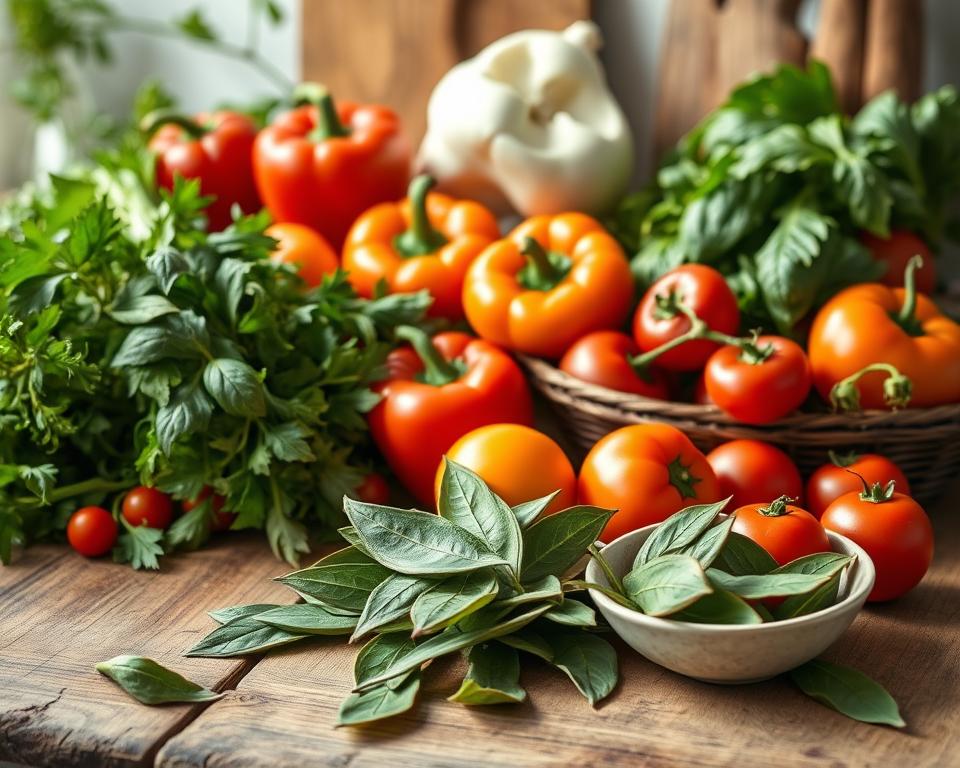
“Bay leaves are a fantastic way to add depth and complexity to vegetarian and vegan dishes without relying on animal-based ingredients. Their unique aroma and flavor profile can truly transform a plant-based meal.”
Bay Leaf: Seasoning Leaf for Flavorful Rice Dishes
Bay leaves can make any grain dish, like rice, taste better. They add a special flavor that turns a simple dish into something amazing.
The taste of bay leaves is earthy, woodsy, and a bit minty. This flavor pairs well with rice, making it taste richer and more complex.
Aromatic Rice Dishes with Bay Leaf
Bay leaves are great in many rice dishes. They add a unique taste that makes the dish stand out:
- Fragrant Basmati Rice: Add a bay leaf to the cooking water for a nice aroma.
- Pilaf-style Rice: Sauté bay leaves with onions, garlic, and spices for a tasty start.
- Using bay leaf in grains like wild rice, brown rice, or quinoa makes them taste better.
To get the most from bay leaves, let them steep in the cooking liquid. This way, they release their oils and flavor into the dish.
“Bay leaves are the unsung heroes of the spice cabinet, adding depth and complexity to a wide range of dishes, especially rice-based preparations.”
By using bay leaf in rice dishes, anyone can make rice dishes that are both tasty and aromatic. They are sure to impress anyone who tries them.
Bay Leaf and Other Herbs: Combining Flavors
Bay leaves are often overlooked, but they’re key to enhancing flavors in cooking. They pair well with many herbs and spices, creating rich, layered tastes. Learning how to mix bay leaves with other ingredients opens up a world of flavors.
Bay leaves and thyme are a classic mix. Thyme’s earthy taste complements bay leaves’ peppery and minty notes. This combo adds depth to soups, stews, and slow-cooked meals. Rosemary also pairs well, with its pine scent matching bay leaves’ unique flavor.
Black pepper is another great match for bay leaves. Its sharpness balances bay leaves’ slight bitterness. This duo is essential for marinades, rubs, and braises, where their flavors come alive.
| Herb/Spice | Flavor Pairing with Bay Leaf |
|---|---|
| Thyme | Earthy, woodsy notes |
| Rosemary | Pine-like aroma |
| Black Pepper | Pungent heat |
Exploring bay leaf flavor pairings can transform your cooking. Try mixing bay leaves with different herbs and spices to find your favorite flavors. This will elevate your dishes to new culinary heights.
“The secret to great cooking is not just about the individual ingredients, but how they work together to create a harmonious whole.”
Conclusion
Bay leaves are a hidden gem in cooking, adding depth to many dishes. They make slow-cooked stews and baked goods special. Their unique flavor enhances any recipe, making it unforgettable.
The role of bay leaves in cooking is huge. They add a special touch to soups and grilled meats. Their ability to mix well with different foods makes them essential for cooks at home and in restaurants.
As we wrap up our look at bay leaves, it’s clear they’re not just any leaves. They bring a special touch to both savory and sweet dishes. Let’s make sure every kitchen has bay leaves to turn simple ingredients into amazing meals.





